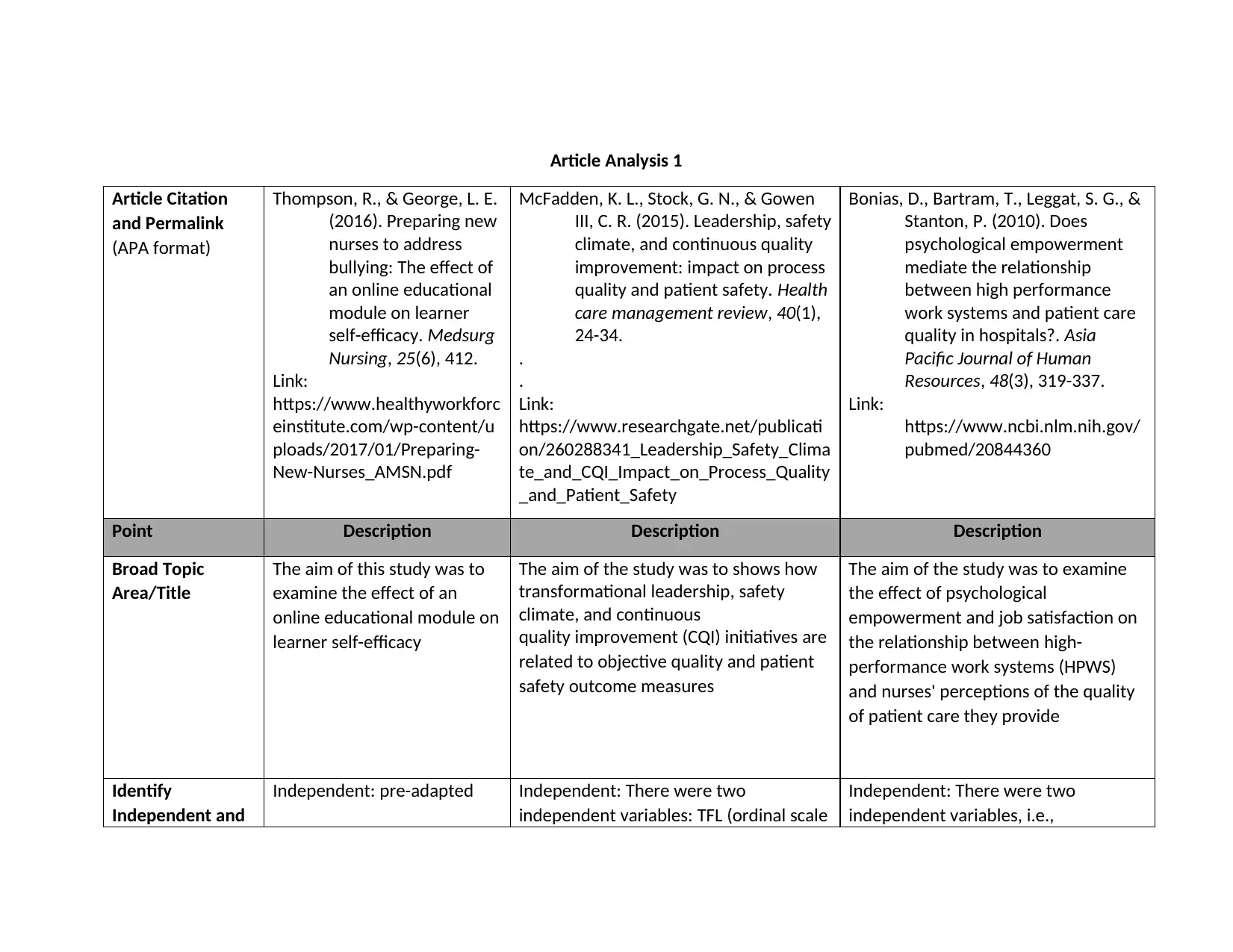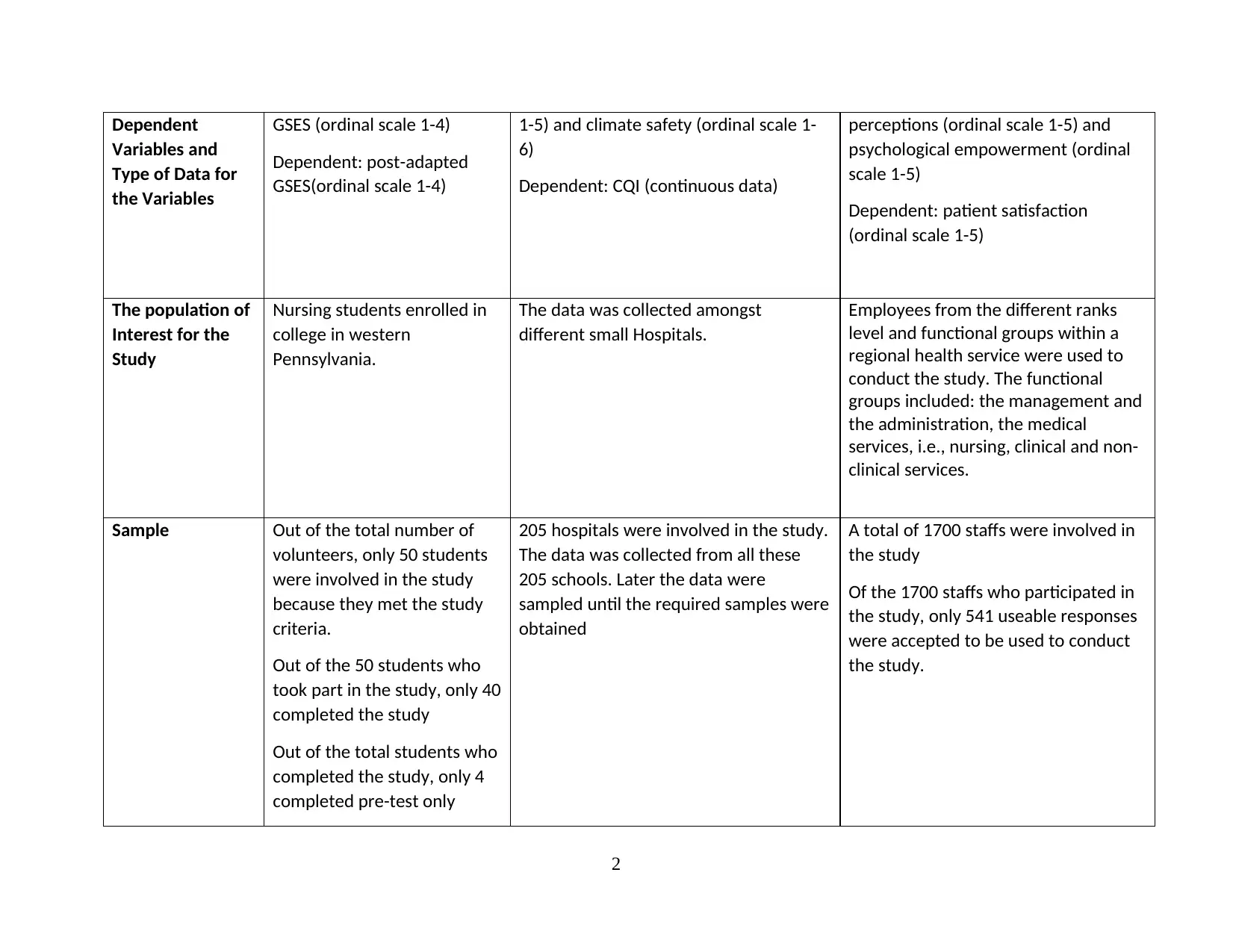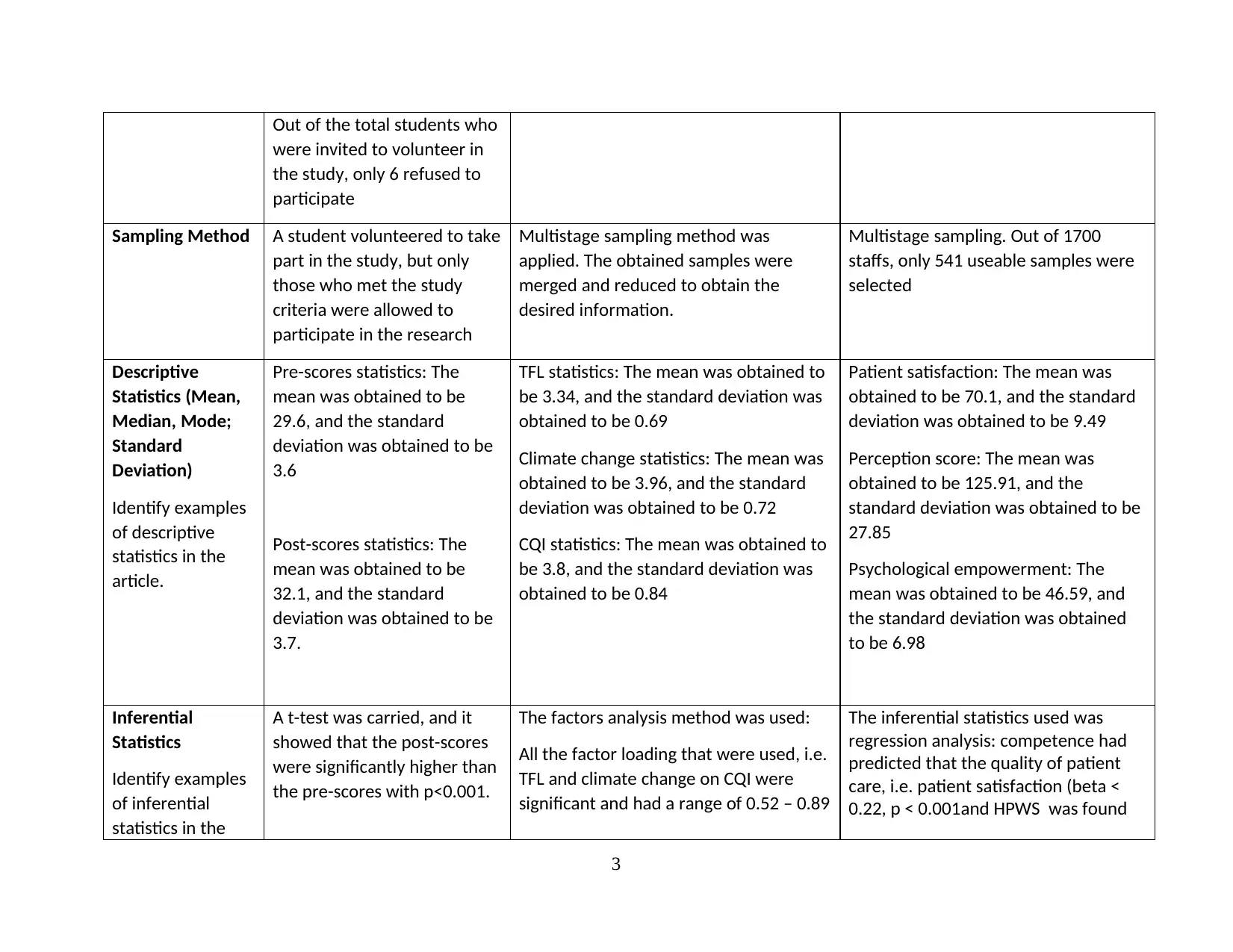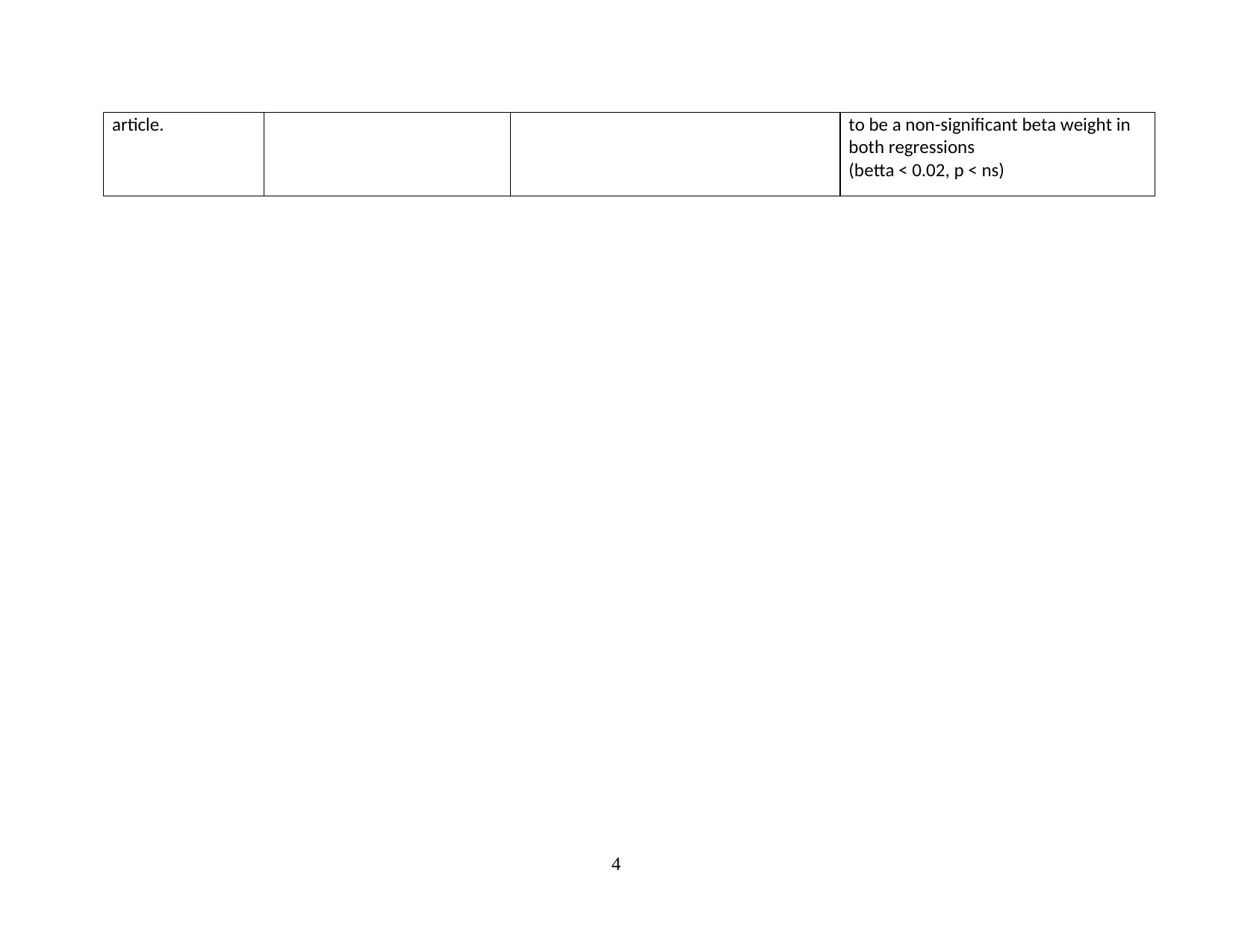Article Analysis 1: Healthcare Research Assignment - Nursing Studies
VerifiedAdded on 2023/02/01
|4
|937
|65
Homework Assignment
AI Summary
This assignment analyzes three healthcare research articles focusing on nursing and healthcare topics. The first article examines the effect of an online educational module on learner self-efficacy, the second explores the relationship between leadership, safety climate, and continuous quality improvement (CQI) on patient safety, and the third investigates the impact of psychological empowerment and job satisfaction on the relationship between high-performance work systems (HPWS) and patient care quality. The analysis includes identifying independent and dependent variables, sample populations, sampling methods, descriptive and inferential statistics, and key findings. The articles employ various statistical methods, including t-tests, factor analysis, and regression analysis. The studies aim to improve healthcare practices, patient safety, and the quality of care provided by nurses.
1 out of 4








![[object Object]](/_next/static/media/star-bottom.7253800d.svg)